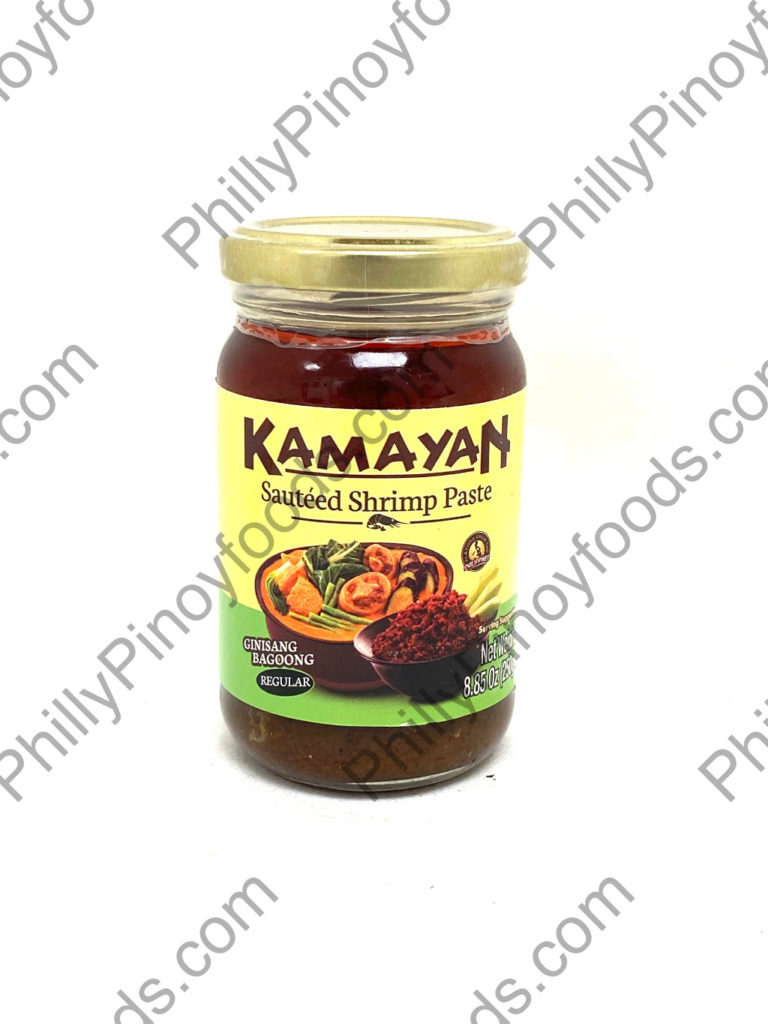

Patís or fish sauce is a byproduct of the fermentation process. Bagoong alamang from Malolos, Bulacan Patís Some manufacturers grind the fermented product finely and sell the resulting mixture as fish paste. Likewise, oversalting and undersalting also has a significant impact on the rate and quality of fermentation due to their effects on the bacteria involved in the process. High metallic content in the salt used can often result in darker colors to the resulting bagoong and a less agreeable undertaste. High-quality salt with little mineral impurities is preferred. Angkak is made from rice inoculated with a species of red mold ( Monascus purpureus). To obtain the characteristic red or pink color of some bagoong, a kind of food coloring known as angkak is added. The products of the fermentation process are usually pale gray to white in color. As in fish bagoong, the shrimp are then mixed with salt in a 25% salt to 75% shrimp ratio by weight. The preparation of bagoong alamang ( shrimp or krill paste) is similar, with krill cleaned thoroughly and washed in weak brine solution (10%). The mixture can expand significantly during the process. It is covered, to keep flies away, and left to ferment for 30–90 days with occasional stirring to make sure the salt is spread evenly. The mixture is kept inside large earthen fermentation jars (known as tapayan in Tagalog and Visayan languages, and burnay in Ilocano).

The salt and fish are mixed uniformly, usually by hand. Preparation Guinamos (fish bagoong) with tomatoes and onions from Cebu Bagoong isda and bagoong alamang īagoong isda is prepared by mixing salt and fish usually by volume mixture proportions are proprietary depending on the manufacturer. A kind of bagoong made in the town of Balayan, Batangas is also known as bagoong Balayan. In rarer instances, it can also be made from oysters, clams, and fish and shrimp roe. It is called uyap or alamang in the southern Philippines, aramang in Ilocos and parts of Northern Luzon, and ginamos or dayok in western Visayas. This type of bagoong is known as bagoong alamang. Larger fermented fish are known as tinabal.

In the southern Visayas and Mindanao, fish bagoong made from anchovies is known as guinamos (also spelled ginamos). Those made from anchovies are generally known as bagoong monamon or bagoong dilis and those from bonnetmouths as bagoong terong. They can be distinguished further by the type of fish they are made of. "fish bagoong") in Luzon and northern parts of the Visayas. Silver perch - known as ayungin ( Leiopotherapon plumbeus)īagoóng made from fish is encompassed by the term bagoóng isdâ (lit.Bar-eyed gobies - known as ipon ( Glossogobius giuris).Rabbitfish - known as padas ( Siganus species).Ponyfish - known as sapsáp ( Leiognathus, Photopectoralis, and Equulites species).Bonnetmouths ( redbait or rubyfish) - known as terong ( Emmelichthys nitidus, Emmelichthys struhsakeri, and Plagiogeneion rubiginosum).Round scads - known as galunggóng or tamodios ( Decapterus species).Anchovies - known as dilis, monamon, bolinaw, or gurayan ( Stolephrus and Encrasicholina species).Types īagoóng is usually made from a variety of fish species, including the following: Bagoóng alamáng is made by fermenting krill in salt Bagoong alamang sauteed with tomatoes, garlic, and onion with pork chicharon The preparation of bagoóng can vary regionally in the Philippines. The fermentation process also produces fish sauce known as patís. Bagoóng ( Tagalog pronunciation: buh-goo- ONG) is a Philippine condiment partially or completely made of either fermented fish ( bagoóng isdâ) or krill or shrimp paste ( bagoóng alamáng) with salt.


 0 kommentar(er)
0 kommentar(er)
